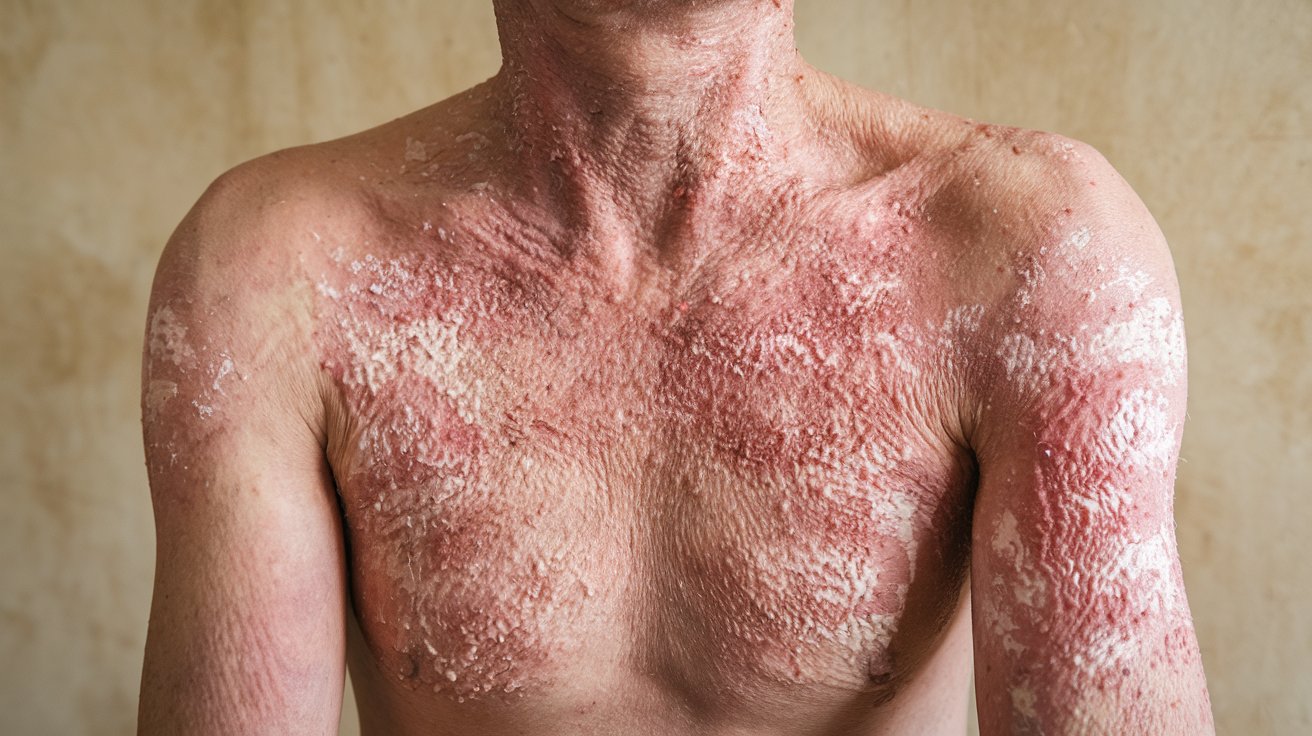
Leiner Disease is a rare condition that affects infants, causing severe skin inflammation, diarrhea, and recurrent infections. But what exactly is Leiner Disease? This disorder, also known as erythroderma desquamativum, can be alarming for parents due to its intense symptoms. Understanding the basics can help in managing and seeking appropriate treatment. This blog post will provide 30 facts about Leiner Disease to shed light on its causes, symptoms, and treatments. Whether you're a concerned parent or just curious, these facts will give you a clearer picture of this rare condition. Let's dive into the essential details you need to know.
Key Takeaways:
- Leiner Disease is a rare skin disorder that affects infants, causing redness, scaling, and discomfort. Understanding its causes, symptoms, and treatment options can help manage the condition effectively.
- Research into Leiner Disease is ongoing, aiming to understand its genetic and immune system basis. Support groups and medical specialists can provide valuable assistance to families dealing with this condition.
What is Leiner Disease?
Leiner Disease, also known as Leiner's disease or erythroderma desquamativum, is a rare skin disorder that primarily affects infants. This condition is characterized by widespread redness, scaling, and peeling of the skin. Understanding the facts about Leiner Disease can help in recognizing and managing it effectively.
Causes and Risk Factors
Understanding the causes and risk factors of Leiner Disease can provide insights into its development and prevention.
- Genetic Factors: Leiner Disease often has a genetic component, meaning it can run in families.
- Immune System Deficiency: Infants with a compromised immune system are more susceptible to developing this condition.
- Complement System Deficiency: A deficiency in the complement system, part of the immune system, is often linked to Leiner Disease.
- Environmental Triggers: Certain environmental factors, such as allergens or irritants, can exacerbate the symptoms.
Symptoms and Diagnosis
Recognizing the symptoms early can lead to prompt diagnosis and treatment, improving the quality of life for affected infants.
- Red, Scaly Skin: One of the most noticeable symptoms is widespread redness and scaling of the skin.
- Peeling Skin: The skin may peel off in large sheets, which can be alarming for parents.
- Irritability: Infants with Leiner Disease often become irritable due to discomfort.
- Failure to Thrive: Affected infants may not gain weight or grow as expected.
- Frequent Infections: Due to a weakened immune system, these infants are prone to frequent infections.
- Seborrheic Dermatitis: This condition often presents with symptoms similar to severe seborrheic dermatitis.
Treatment Options
While there is no cure for Leiner Disease, various treatments can help manage the symptoms and improve the infant's condition.
- Topical Steroids: These can reduce inflammation and redness.
- Antibiotics: Used to treat secondary bacterial infections that may occur.
- Moisturizers: Keeping the skin hydrated can help reduce scaling and peeling.
- Nutritional Support: Ensuring the infant receives adequate nutrition is crucial for growth and development.
- Immune System Support: Treatments to boost the immune system may be beneficial.
- Avoiding Triggers: Identifying and avoiding environmental triggers can help manage symptoms.
Prognosis and Long-Term Outlook
The long-term outlook for infants with Leiner Disease varies, but understanding the prognosis can help parents prepare and manage expectations.
- Variable Prognosis: The severity and duration of the disease can vary widely among affected infants.
- Potential for Improvement: Many infants see significant improvement with appropriate treatment.
- Chronic Condition: For some, Leiner Disease may become a chronic condition requiring ongoing management.
- Monitoring Growth: Regular monitoring of growth and development is essential.
- Supportive Care: Ongoing supportive care can improve the quality of life for affected infants.
Research and Future Directions
Ongoing research is crucial for understanding Leiner Disease better and developing more effective treatments.
- Genetic Research: Studies are being conducted to understand the genetic basis of Leiner Disease.
- Immune System Studies: Research into how the immune system is affected can lead to new treatments.
- New Therapies: Scientists are exploring new therapies that could offer better management of symptoms.
- Clinical Trials: Participation in clinical trials can provide access to cutting-edge treatments.
- Patient Registries: Registries help track the progress of affected individuals and contribute to research.
Support and Resources
Having access to support and resources can make a significant difference for families dealing with Leiner Disease.
- Support Groups: Connecting with other families can provide emotional support and practical advice.
- Medical Specialists: Consulting with dermatologists and immunologists can ensure comprehensive care.
- Educational Materials: Access to educational materials can help parents understand and manage the condition.
- Financial Assistance: Some organizations offer financial assistance for medical treatments and related expenses.
Final Thoughts on Leiner Disease
Leiner Disease, a rare and severe skin condition, primarily affects infants. Early diagnosis and treatment are crucial for managing symptoms and preventing complications. The disease often presents with symptoms like severe diaper rash, scaling, and redness. Treatment typically involves topical steroids, antibiotics, and sometimes immunosuppressive drugs. Parents should seek medical advice if they notice persistent skin issues in their infants. Understanding the genetic component can also help in managing expectations and planning for future pregnancies. While challenging, with proper medical care and support, many children with Leiner Disease can lead healthy lives. Awareness and education about this condition can make a significant difference in the lives of affected families. Stay informed, consult healthcare professionals, and support research efforts to improve outcomes for those living with Leiner Disease.
Frequently Asked Questions
Was this page helpful?
Our commitment to delivering trustworthy and engaging content is at the heart of what we do. Each fact on our site is contributed by real users like you, bringing a wealth of diverse insights and information. To ensure the highest standards of accuracy and reliability, our dedicated editors meticulously review each submission. This process guarantees that the facts we share are not only fascinating but also credible. Trust in our commitment to quality and authenticity as you explore and learn with us.
